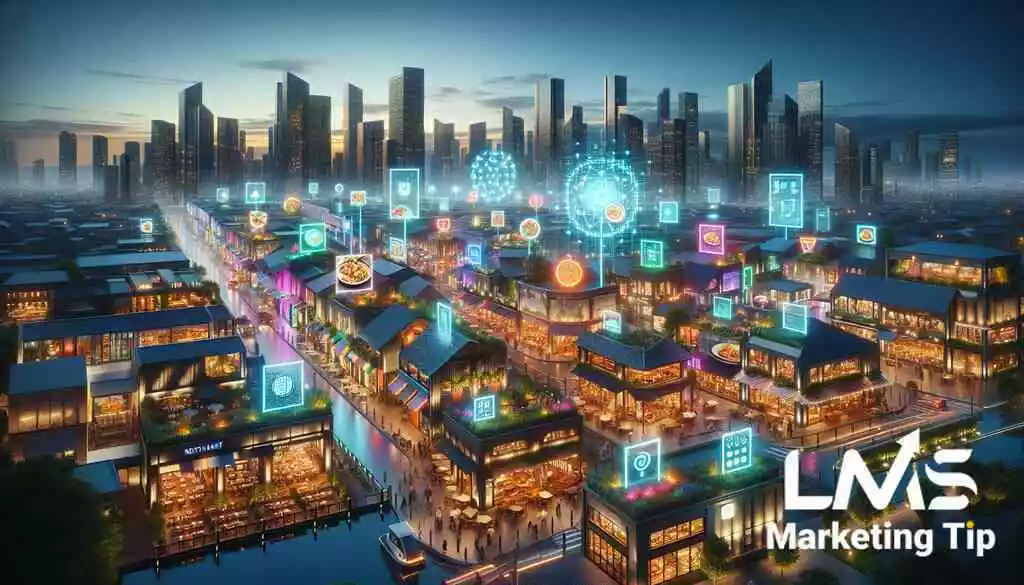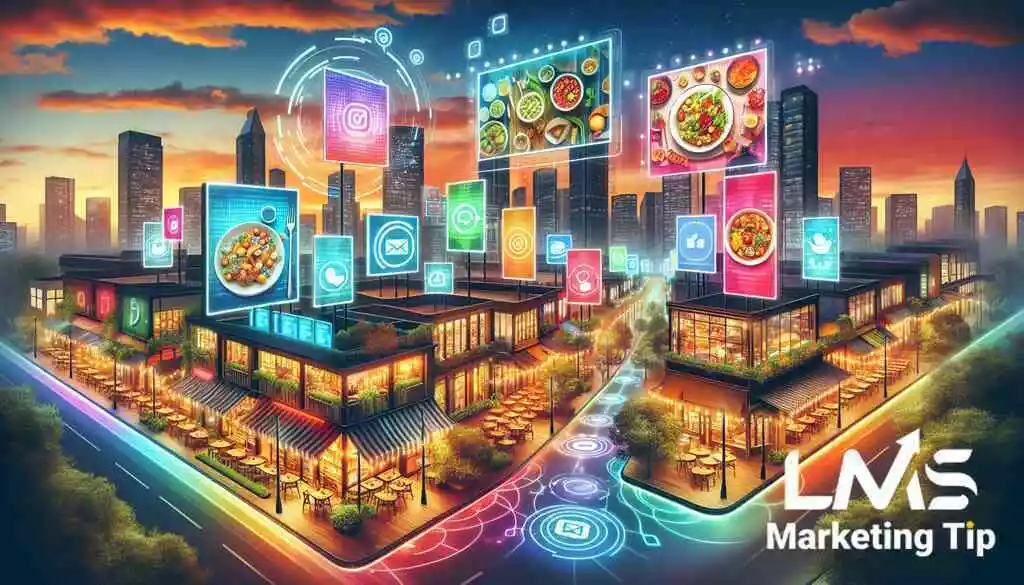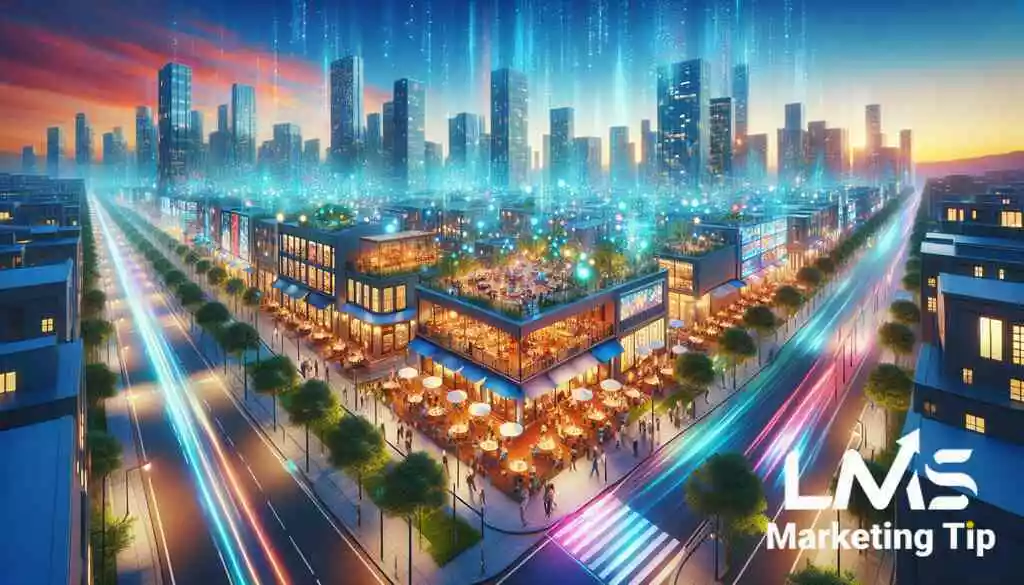
Introduction to Restaurant Marketing in the Digital Age
The evolution of restaurant marketing
The landscape of restaurant marketing has undergone significant transformation over the past few decades. Traditional methods such as print advertisements, billboards, and radio spots have gradually given way to more dynamic and interactive digital platforms. The advent of the internet and social media has revolutionized the way restaurants connect with their customers, providing opportunities to engage in real-time and on a more personal level. This shift not only reflects changes in technology but also aligns with changing consumer behaviors and expectations, where convenience, speed, and relevance reign supreme.
Why digital marketing is crucial for restaurants today
In today’s digital-first world, having a robust online presence is not just beneficial but essential for restaurants of all sizes. Digital marketing offers measurable and cost-effective strategies that can enhance visibility, attract new customers, and increase brand loyalty. Restaurants can leverage targeted advertising, social media, and search engine optimization to reach potential customers precisely at the moment they’re searching for dining options. Moreover, digital platforms offer invaluable data that can be used to understand consumer preferences and behavior, enabling restaurants to tailor their offerings and marketing messages more effectively.
Overview of digital marketing channels for restaurants
Restaurants today have a plethora of digital channels at their disposal to enhance their marketing efforts. Social media platforms like Facebook, Instagram, and Twitter allow for direct engagement with customers through posts, stories, and interactive content. Websites and mobile apps provide a central hub for ordering, reservations, and customer service. Additionally, email marketing can be used to nurture customer relationships through personalized offers and newsletters. For local visibility, focusing on SEO and optimizing Google My Business listings are crucial to appear prominently in local search results. By leveraging these channels, restaurants can craft a comprehensive digital marketing strategy that targets their audience effectively, ensuring they stay competitive and relevant in a crowded marketplace.
Identifying Your Restaurant’s Target Audience
Demographic Analysis for Restaurant Marketing
Before diving into any marketing campaign, identifying your target audience is critical. For restaurants, this means understanding demographic factors such as age, gender, income levels, and even local cultures that might influence dining choices. Tools like Google Analytics and social media insights can provide a wealth of data about who is visiting your site and engaging with your content. Additionally, a deep dive into the demographic distribution in your local area can help tailor your restaurant’s offerings and marketing messages to meet the specific tastes and demands of your community. Investing time in demographic analysis not only sharpens your marketing strategy but significantly boosts the efficacy of your digital marketing plan, ensuring you reach the right people with the right message.
Understanding Customer Preferences and Dining Habits
After you have a grip on the demographic specifics, the next step is to delve into the psychographic details-understanding customer preferences, dining habits, and lifestyle choices. Are your potential customers looking for quick service, fine dining, or a family-style experience? Do they prefer organic ingredients, are they inclined towards international cuisine, or perhaps vegan options are what attracts them? Utilizing surveys, feedback forms, and review analytics tools can help unveil these preferences. Moreover, tapping into social media platforms offers direct interaction with your clientele, providing first-hand insight into their dining habits and preferences. By aligning your marketing strategies with these insights, you can carve a niche that resonates strongly with your audience.
Using Data to Refine Your Target Audience
The final piece of the puzzle lies in refining your target audience using the data collected. Advances in data analytics allow restaurant owners to hyper-target their advertising efforts. Tools like Facebook Insights and Google’s Market Finder can fine-tune your audience segments by predicting purchasing behaviors and identifying new customer subsets. These technologies allow for dynamic marketing adjustments, letting restaurants stay relevant in changing market conditions. Furthermore, employing effective restaurant marketing campaigns that use data-driven insights can dramatically increase ROI by targeting individuals who are most likely to respond positively to your promotions. Through perpetual refining and experimenting, restaurants can maintain a vibrant and compelling digital presence that continuously attracts and retains customers.
Leveraging Local SEO for Your Restaurant
Basics of restaurant SEO
In the competitive world of dining, optimizing your restaurant’s SEO is not just a luxury-it’s a necessity. SEO (Search Engine Optimization) for restaurants revolves around enhancing online visibility to prospective customers through organic search engine results. This search engine optimization for restaurants encompasses keyword-rich content that reflects standard search terms, optimizing website structures, and ensuring your site is mobile-friendly, considering most local searches are performed on mobile devices. Additionally, regularly updated content such as blogs or menus can signal to search engines that your restaurant’s website is a relevant, active player in the industry. By focusing on these essential elements, you can increase the likelihood that your restaurant appears at the top of search results when potential customers are looking for a great place to eat nearby.
Optimizing your restaurant’s Google My Business listing
Your Google My Business (GMB) profile acts as one of the most powerful tools in your local SEO arsenal. By accurately and comprehensively filling out your profile, you provide valuable data to Google, which in turn helps match your restaurant to individuals searching for dining options in your area. Key components include your business name, address, phone number, and hours of operation. Additionally, adding high-quality photos of your dishes, menu, and dining environment can enhance engagement. Encouraging satisfied customers to leave positive reviews on your GMB profile also boosts your visibility and appeal. Regularly updating your profile with posts about special events, promotions, or new menu items can keep potential diners informed and engaged.
Building local backlinks and citations
Building local backlinks and citations is crucial for enhancing your restaurant’s local SEO strategy. Backlinks-links from other reputable websites to your site-signal to search engines that your content is valuable and trustworthy, thereby boosting your ranking in search results. Partnering with local bloggers or websites that focus on food and dining can be an effective way to gain quality backlinks. Citations, which are online mentions of your restaurant’s name, address, and phone number, further reinforce your local presence. Ensuring that your restaurant’s details are consistent across all platforms and directories can prevent confusion and strengthen your SEO efforts. Together, these strategies not only improve your search engine rankings but also enhance your restaurant’s overall digital presence, making it easier for local customers to find you.
Effective Social Media Marketing Strategies
Choosing the right platforms for restaurant promotion
Selecting the appropriate social media platforms is essential for maximizing the impact of your restaurant’s marketing efforts. Each platform serves a unique demographic and facilitates different types of engagement. For instance, Instagram and Pinterest are excellent for showcasing high-quality images of your dishes, while Twitter can be ideal for real-time communication and promotions. Facebook remains a versatile tool, suitable for sharing longer posts, events, and community engagement. It’s crucial to identify where your target audience spends most of their time online to concentrate your efforts effectively. According to a digital marketing agency, aligning your platform choice with your restaurant’s target audience insights can significantly enhance engagement and customer conversion rates.
Engaging with customers through social media
Engagement on social media isn’t just about posting regularly; it’s about creating conversations and building relationships. Personal interaction, such as responding to comments, reposting customers’ content, and running interactive polls or contests, makes customers feel valued and more likely to become loyal patrons. Techniques such as using user-generated content in your campaigns can increase trust and community feeling among followers. Remember, a good rule of thumb from a proven marketing agency is always to offer more value than you ask for in return. This could mean providing exclusive offers, insider information, or simply a compelling narrative about your restaurant’s mission and culinary expertise.
Creating viral content to boost restaurant visibility
Viral marketing is about creating content that is so compelling that individuals want to share it. For restaurants, this might mean crafting unique hashtag challenges, engaging videos, or stunning visuals of new dishes. However, the key to viral success lies in originality and emotional connection. Content that evokes humor, joy, surprise, or even nostalgia can lead to higher engagement rates and broaden your reach exponentially. Consider collaborating with influencers or local celebrities to amplify your message. A digital marketing team excels in creating campaigns that not only aim to go viral but also align these efforts with the restaurant’s branding and customer engagement goals, ensuring that every share contributes to a larger marketing strategy.
Design and Usability of Restaurant Websites
Critical elements of a successful restaurant website
Creating a successful restaurant website involves more than just attractive visuals; it requires strategic design and functionality that cater to the needs of the visitors. Key elements include a clear brand message that aligns with your overall marketing tip and strategy, intuitive navigation, and high-quality imagery that showcases the culinary experiences offered. For instance, integrating features like a menu preview, photo galleries, and customer testimonials can significantly enhance user engagement and brand awareness. Moreover, implementing effective web design for better online engagement ensures that your website remains competitive and appealing, driving more web traffic and, ultimately, customers to the restaurant.
Mobile optimization and user-friendly design
In today’s fast-paced digital world, mobile optimization is crucial for any restaurant website. A mobile-friendly design ensures that your website is accessible and easy to navigate on all devices, especially smartphones, from which a significant portion of users access the internet. Key considerations include responsive web design, fast loading times, and accessible menus and content that don’t require zooming or horizontal scrolling. Integrating these elements makes it easier for potential diners to find what they’re looking for, leading to increased satisfaction and higher conversion rates. Remember, a user-friendly design not only caters to customer needs but also significantly boosts your site’s SEO, enhancing visibility on search engines.
Integrating online reservations and menus
To enhance the functionality of a restaurant website, integrating online reservations and comprehensive, easy-to-navigate menus is essential. This not only improves the user experience by simplifying the reservation process but also aids in efficient restaurant management. Online systems like these allow for better table management and customer data collection, enabling personalized marketing strategies and improving customer service. Moreover, providing an interactive and updated menu online can help potential customers make dining decisions more efficiently, which increases the likelihood of them choosing your restaurant. Through these integrations, restaurants can offer more than just an online presence; they provide a convenient service that meets modern diners’ expectations, thereby driving higher engagement and retention.
Hyperlocal Marketing and Geo-Targeted Advertising
What is hyperlocal marketing?
Hyperlocal marketing is a type of marketing strategy that focuses on reaching a particular, community-oriented audience within a tightly defined geographic area. This approach is particularly relevant for restaurants aiming to attract residents or people visiting the area. By targeting potential customers living in close proximity, restaurants can increase relevance and appeal, leading to enhanced customer engagement and foot traffic. Utilizing hyperlocal restaurant marketing near me allows eateries to tailor their advertising messages, promotions, and special offers to meet the unique preferences and needs of the local demographic, making marketing efforts both more personal and practical.
Techniques for effective geo-targeted ads
Employing geo-targeted advertising requires precision and creativity. One effective technique is the use of geofencing, which involves creating virtual boundaries around specific areas where ads are displayed to mobile users within that space. This ensures that your restaurant’s marketing efforts are reaching individuals who are most likely to visit due to their proximity. Additionally, leveraging local keywords in your online content and ads can significantly boost visibility on search engines for users searching with local intent. Incorporating offers tailored to local events or holidays and even weather-based promotions can also enhance the responsiveness of geo-targeted campaigns. By employing tactics for geographically targeted restaurant ads, restaurants can maximize their advertising ROI by ensuring that their messages are seen by the right people at the right time.
Case studies of successful local marketing campaigns
To anchor the theoretical advantages of hyperlocal and geo-targeted advertising in reality, let’s consider some examples of successful campaigns. A notable instance involves a restaurant group that launched a targeted ad campaign during a local festival. By using geo-targeted ads focused on the festival attendees, the restaurant saw a significant increase in visits during the event. The use of local influencers to promote special menu items specific to the festival’s theme also amplified the reach and impact of the marketing efforts. Another case involved redesigning a local restaurant’s website to optimize for local SEO and incorporating local landmarks and terminology in their content strategy. This not only enhanced their visibility in local search results but also increased engagement and bookings. These practical applications demonstrate the tangible benefits of crafting focused marketing strategies that resonate well with a local audience.
Engaging Content Marketing for Restaurants
Creating compelling blog posts and articles
In today’s competitive restaurant industry, creating compelling blog posts and articles can significantly enhance your digital marketing efforts. Each piece of content should not only inform but also entertain and engage your audience. Start with eye-catching headlines, use inviting intros, and keep your language conversational yet professional. For efficiency, focus on topics that resonate with your target audience, such as behind-the-scenes looks at your kitchen, chef interviews, and seasonal menu previews. Incorporating SEO strategies ensures that your content ranks well in search engine results, drawing more visitors to your site and boosting your online visibility.
Using videos and images to tell your restaurant’s story
Visual storytelling is a powerful tool in the restaurant business. Videos and images can convey the ambiance of your location, the artistry of your dishes, and the passion of your staff more effectively than text alone. Create high-quality video tours of your restaurant, chef table experiences, or cooking demonstrations to engage the audience. Share these visuals across your social media platforms and website to capture the essence of your culinary experiences. Well-executed visual content not only enhances your brand identity but also inspires shares and interactions, which are crucial for expanding your digital footprint and customer base.
Email newsletters to keep customers informed and engaged
Email newsletters are a critical component of effective restaurant marketing, enabling direct communication with your customers. They offer a platform to announce new menu items, special events, and exclusive offers. Personalization is key-segment your email lists to tailor messages according to customer preferences and dining history, enhancing relevance and engagement. Tools and tactics for effective restaurant marketing campaigns can help in designing visually appealing and content-rich newsletters that drive more reservations and repeat business, ensuring your diners are continually engaged and eager to return.
Conclusion: The Future of Restaurant Marketing
Emerging trends in the restaurant industry
The restaurant industry is on the cusp of a transformative era driven by rapidly evolving consumer preferences and groundbreaking technological advancements. In the coming years, we can anticipate significant growth in areas such as sustainability-driven dining options, the integration of artificial intelligence for personalized customer experiences, and an increase in virtual restaurants that operate solely for delivery. These emerging trends necessitate a fresh approach to marketing, focusing not only on attracting customers but also on building lasting patron loyalty through sustainability and innovation.
How technology is shaping restaurant marketing strategies
Technology is becoming an indispensable part of crafting effective restaurant marketing strategies. From automated marketing tools that facilitate personalized email campaigns to advanced analytics that harness big data to predict consumer trends, technology is empowering restaurants to reach their target audience with unprecedented precision. Furthermore, the rise of virtual reality and augmented reality offers new avenues for interactive dining experiences, creating more immersive ways for customers to engage with brands from the comfort of their homes. These innovations underscore the importance of a well-rounded digital marketing plan that incorporates cutting-edge tools and platforms to stay relevant in a technology-driven market.
Final thoughts on staying competitive in a digital marketplace
Staying competitive in the dynamic field of restaurant marketing involves a combination of adaptive strategies, ongoing learning, and embracing new technologies. Restaurants must foster an online presence that resonates with their brand identity and speaks directly to their consumers’ needs. Implementing SEO, leveraging social media platforms effectively, and continually refreshing web content are foundational steps. Moreover, personalizing the customer experience through data-driven insights can significantly enhance customer satisfaction and loyalty. Lastly, maintaining responsiveness to market changes and customer feedback will equip restaurants with the agility needed to thrive in a digital marketplace.
By integrating these advanced strategies, restaurants can not only increase their visibility but also create meaningful connections with their customers, paving the way for sustained success in the digital age.
Frequently Asked Questions
Question: How can Marketing Tip help restaurants improve their digital presence and SEO?
Answer: Marketing Tip provides comprehensive strategies tailored to enhance your restaurant’s digital presence and SEO. By focusing on innovative restaurant search engine optimization techniques, we ensure your eaterie ranks higher on search engines, attracting more local traffic. Our expertise in web design, content creation, and regular SEO auditing, supported by a robust digital marketing plan, equips restaurants to dominate in highly competitive markets.
Question: What kinds of targeted restaurant advertising does Marketing Tip suggest for local restaurant marketing?
Answer: At Marketing Tip, we recommend using hyper-local marketing and geo-targeted advertising to reach your local audience effectively. By crafting advertisements specific to local events, festivals, and holidays and utilizing geofencing technology, we ensure that your marketing efforts resonate deeply with the community. Read more about Holiday Marketing Tips. Optimizing your campaigns for local SEO also boosts visibility and drives more foot traffic to your restaurant.
Question: In the blog post ‘Reimagining Restaurant Marketing Near Me,’ how does Marketing Tip propose utilizing social media to enhance restaurant customer engagement?
Answer: Marketing Tip advocates for a strategic approach to restaurant social media marketing to boost customer engagement. This includes selecting the right platforms based on your target audience, creating engaging content, and interacting personally with your followers. Through interactive polls, sharing user-generated content, and employing influencer marketing, we help build a community around your brand, turning casual visitors into loyal customers.
Question: Can Marketing Tip assist in designing a user-friendly and optimized restaurant website?
Answer: Yes, Marketing Tip excels in creating user-friendly and visually appealing restaurant web designs that are optimized for all platforms, especially mobile devices. Our web development team integrates essential features such as online reservations and dynamic menus, optimization for speed and usability, and aligns with the latest SEO standards to improve your search rankings and user engagement.
Question: What innovative marketing strategies for restaurants does Marketing Tip recommend to stay competitive?
Answer: Marketing Tip recommends embracing cutting-edge technologies and trends, such as integrating artificial intelligence to personalize customer experiences and using augmented reality to offer immersive dining previews. Explore more on Exploring AI’s Role in Commack’s Marketing Future. Our digital marketing team stays ahead of trends, providing innovative marketing strategies that ensure your restaurant adapts to changes in consumer behavior and technology, keeping you a step ahead of competitors.











